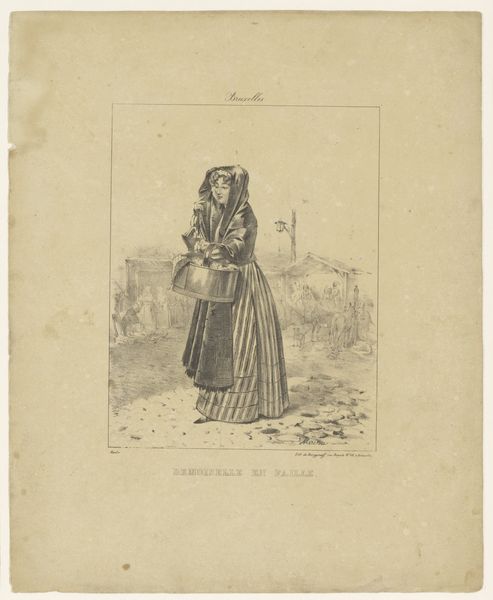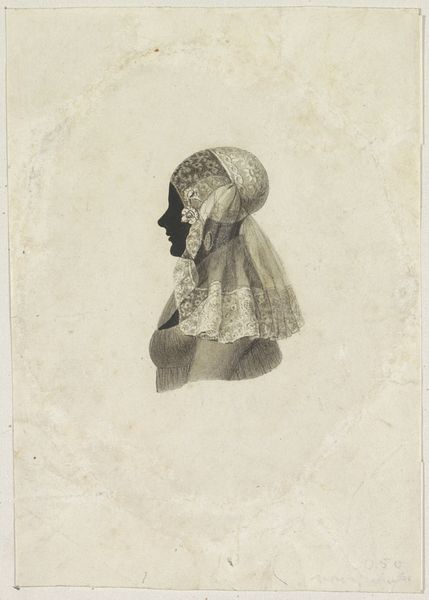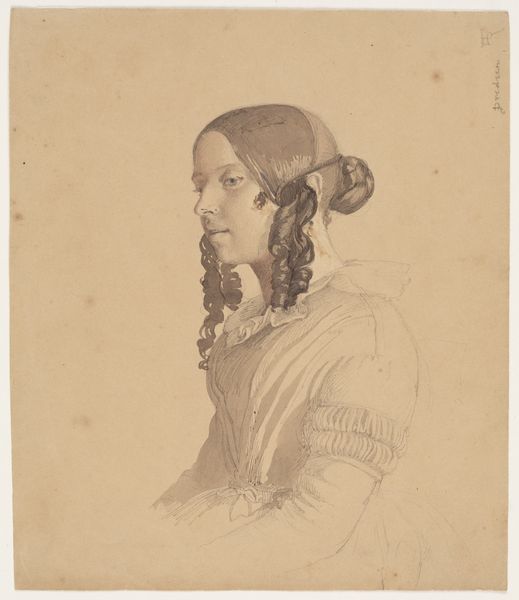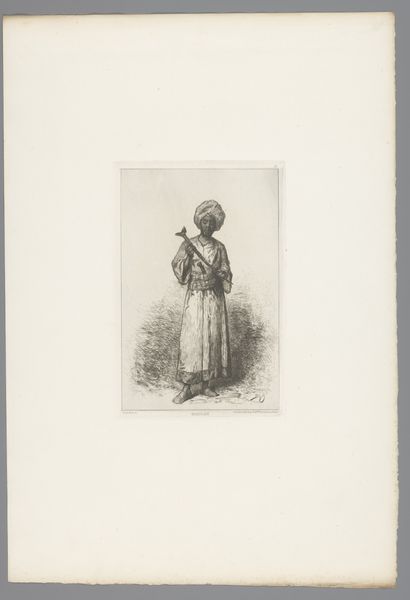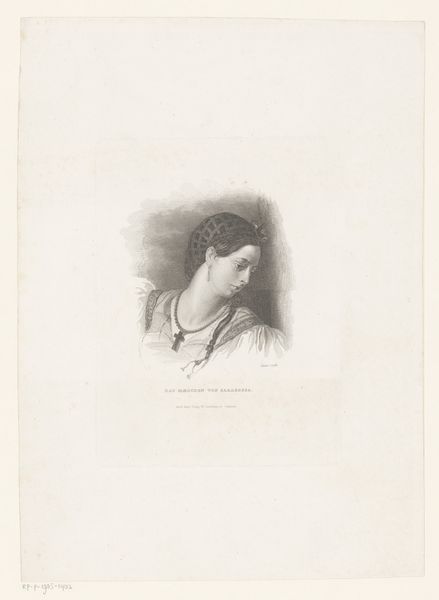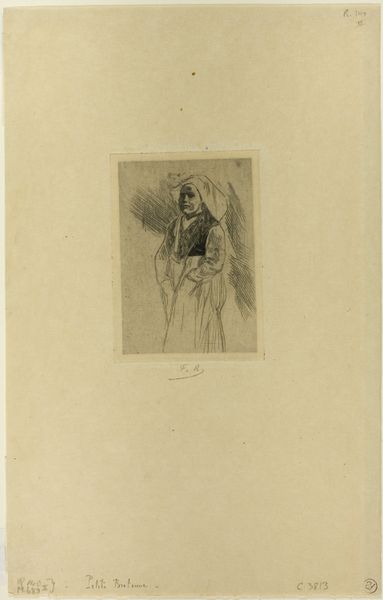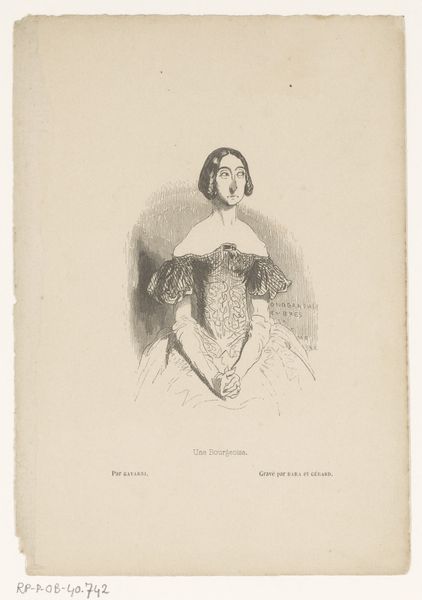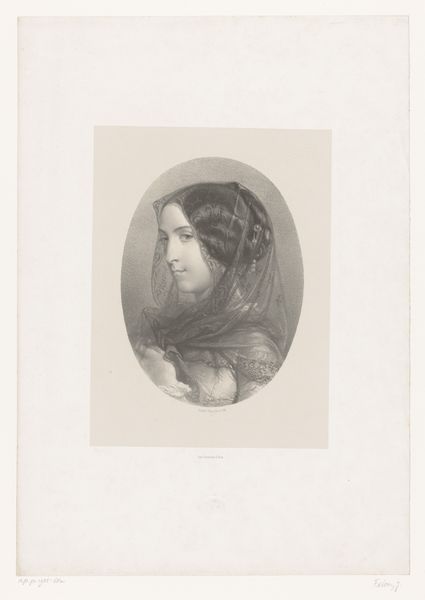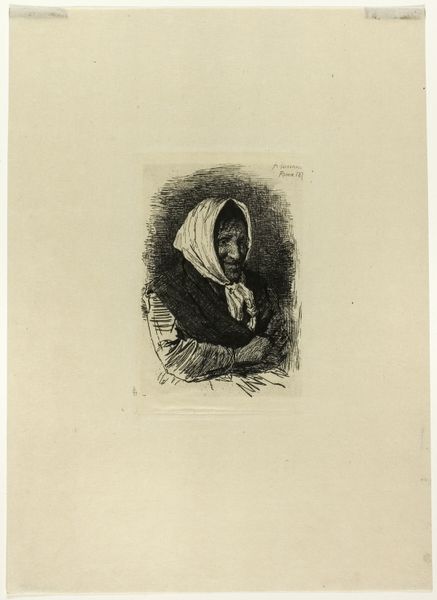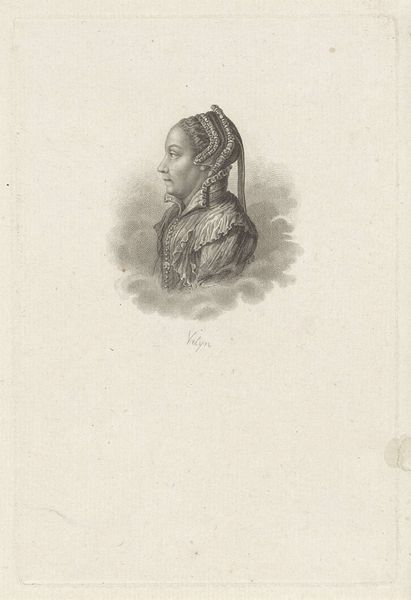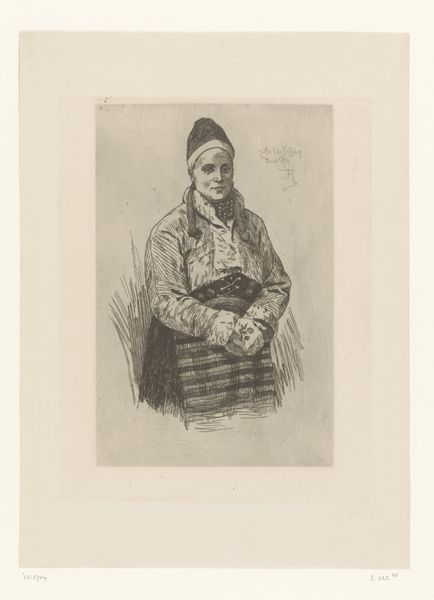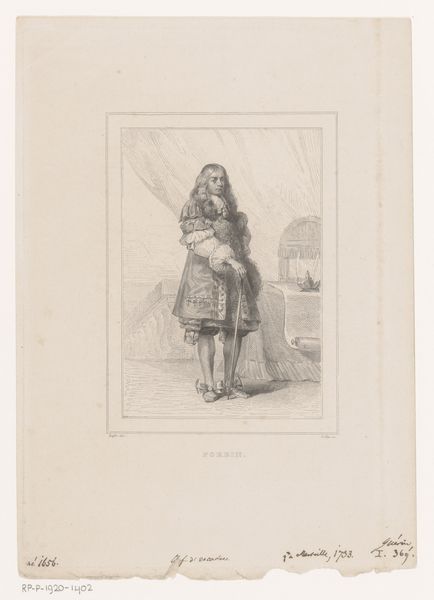
drawing, engraving
#
portrait
#
drawing
#
romanticism
#
engraving
#
realism
Dimensions: height 487 mm, width 316 mm
Copyright: Rijks Museum: Open Domain
Curator: This portrait drawing from between 1839 and 1850 depicts Marie Lafarge, rendered by G. Chariol, employing engraving techniques. Editor: There's a real weightiness here, not just in the subject's apparent demeanor, but in the layers of detail captured with those fine lines. I immediately wonder about the labor and skill involved in its making. Curator: Indeed. Marie Lafarge's story became something of a cultural touchstone. Consider the layered veil and bonnet. These offer a semiotic shield—the attempt to obscure perhaps, but also to denote status and societal expectations. What psychological impact do you think those attempts to hide had in the broader cultural consciousness? Editor: The fact that it’s an engraving makes me consider the social implications of reproduction. Prints allowed wider circulation of imagery and ideas than paintings would at that time. The means to mechanically reproduce a face and likeness suggests a deliberate effort to widely broadcast an idea and a specific figure in relation to it. Curator: That distribution point is a great one to note! We also have to consider the Realism of the face itself against the backdrop of Romanticism with such close, considered character renderings. The effect seems like a conscious visual language aimed at generating intense and diverse public interpretation. Editor: What intrigues me about Chariol's process is how they create shading through such densely layered line work. It shows an immense commitment to craft, transforming readily available materials—copper plates, ink, and paper—into complex expressions. It prompts consideration for those unnamed printers who helped bring this into public view. Curator: I'm so drawn into her gaze. In it, there is sadness. Marie became an archetype, reflecting anxieties about female roles and justice itself. To see her depicted with this carefully observed sense of realism imbues it with enduring significance. Editor: Looking at the detail of this engraving in that way, reminds us of the work involved not just by the artist, but by all the figures behind the final print in circulation. It’s in seeing the skill and labor that the piece reveals broader implications. Curator: Yes, in this instance it provides another chance to see ourselves more clearly in history's reflection.
Comments
No comments
Be the first to comment and join the conversation on the ultimate creative platform.

